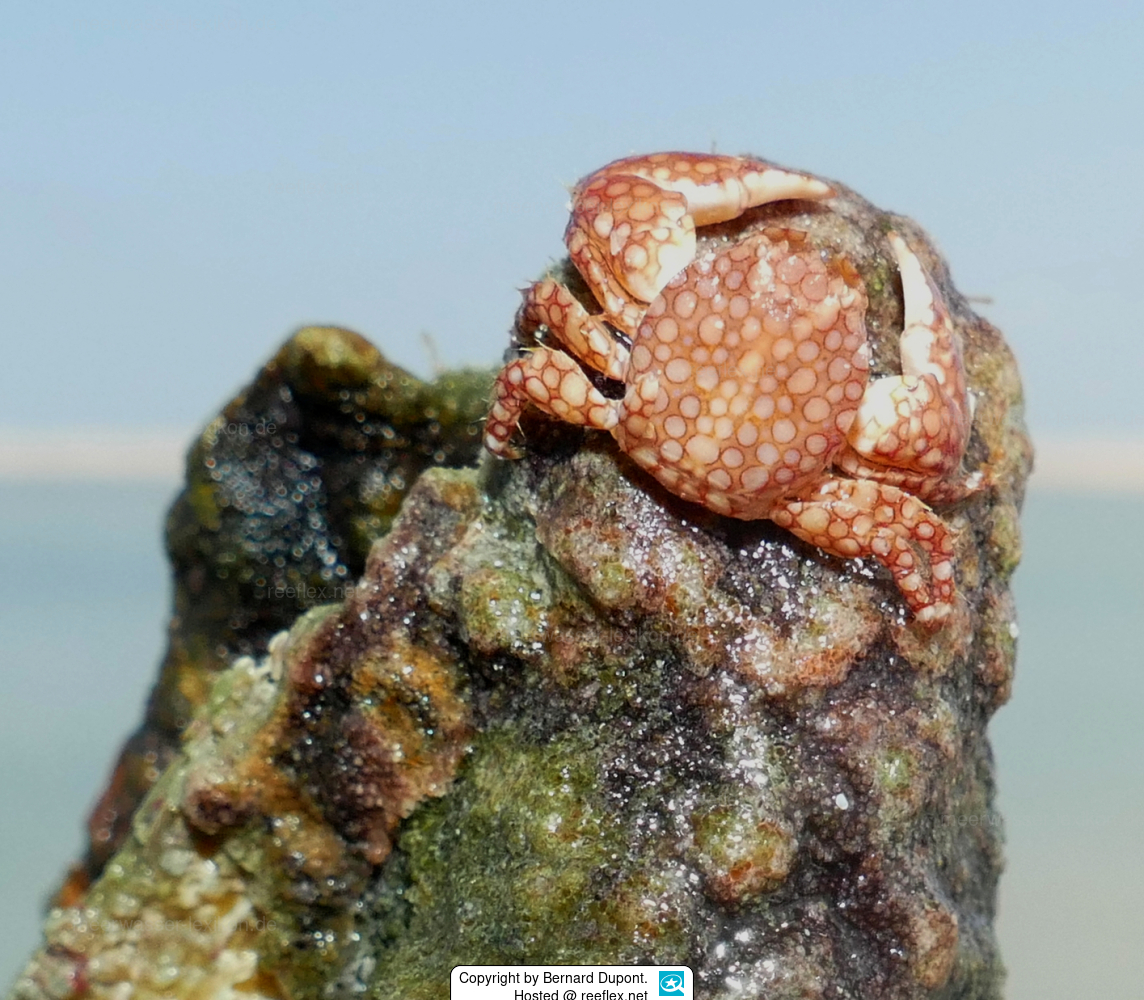Info
Porcellana sayana (Leach, 1820)
Porcellana sayana is one of the most colorful porcelain crabs in the Western Atlantic, well known to divers and underwater photographers. Haig (1966) already noted a remarkable variation in the color pattern of the species, with most specimens covered with white or lavender round spots of varying sizes, some with dark red circles, others having longitudinal bands or combining spots and bands
The spotted porcelain crab is found in a variety of habitats and on a variety of bottom types, typically coral or rocky reefs, but also on rocky-sandy plains, near seagrass beds and mangroves. The porcelain crab lives in association with larger hermit crabs, especially with Petrochirus diogenes, Dardanus venosus and Dardanus fucosus, and more rarely with Paguristes grayi and Pagurus pollicaris. Petrochirus diogenes is one of the most common hosts of the porcelain crayfish.
The porcelain crab is reported to cling to or near the operculum of the giant snail Aliger gigas and is also found in association with the sea roller Astichopus multifidus and with larger Brachyura crabs such as Stenocionops furcatus and Dromia erythropus.
The porcelain crab also lives freely on sand, mud and shell bottoms or in crevices of oyster heaps.
Like all other crabs in the family Porcellanidae, Porcellana sayana also has two pincers and the typical feathered mouthparts for filtering out plankton.
Synonyms:
Percellana sagrai (von Martens, 1872)
Pisidia sayana (Leach, 1820)
Porcellana ocellata (Gibbes, 1850)
Porcellana robertsoni (Henderson, 1888)
Porcellana sagrai (Guérin-Méneville, 1855)
Porcellana sayii (Leach, 1820)
Porcellana stimpsoni (A. Milne-Edwards, 1880)
Porcellana sayana is one of the most colorful porcelain crabs in the Western Atlantic, well known to divers and underwater photographers. Haig (1966) already noted a remarkable variation in the color pattern of the species, with most specimens covered with white or lavender round spots of varying sizes, some with dark red circles, others having longitudinal bands or combining spots and bands
The spotted porcelain crab is found in a variety of habitats and on a variety of bottom types, typically coral or rocky reefs, but also on rocky-sandy plains, near seagrass beds and mangroves. The porcelain crab lives in association with larger hermit crabs, especially with Petrochirus diogenes, Dardanus venosus and Dardanus fucosus, and more rarely with Paguristes grayi and Pagurus pollicaris. Petrochirus diogenes is one of the most common hosts of the porcelain crayfish.
The porcelain crab is reported to cling to or near the operculum of the giant snail Aliger gigas and is also found in association with the sea roller Astichopus multifidus and with larger Brachyura crabs such as Stenocionops furcatus and Dromia erythropus.
The porcelain crab also lives freely on sand, mud and shell bottoms or in crevices of oyster heaps.
Like all other crabs in the family Porcellanidae, Porcellana sayana also has two pincers and the typical feathered mouthparts for filtering out plankton.
Synonyms:
Percellana sagrai (von Martens, 1872)
Pisidia sayana (Leach, 1820)
Porcellana ocellata (Gibbes, 1850)
Porcellana robertsoni (Henderson, 1888)
Porcellana sagrai (Guérin-Méneville, 1855)
Porcellana sayii (Leach, 1820)
Porcellana stimpsoni (A. Milne-Edwards, 1880)







 Bernard Dupont, Frankreich
Bernard Dupont, Frankreich





